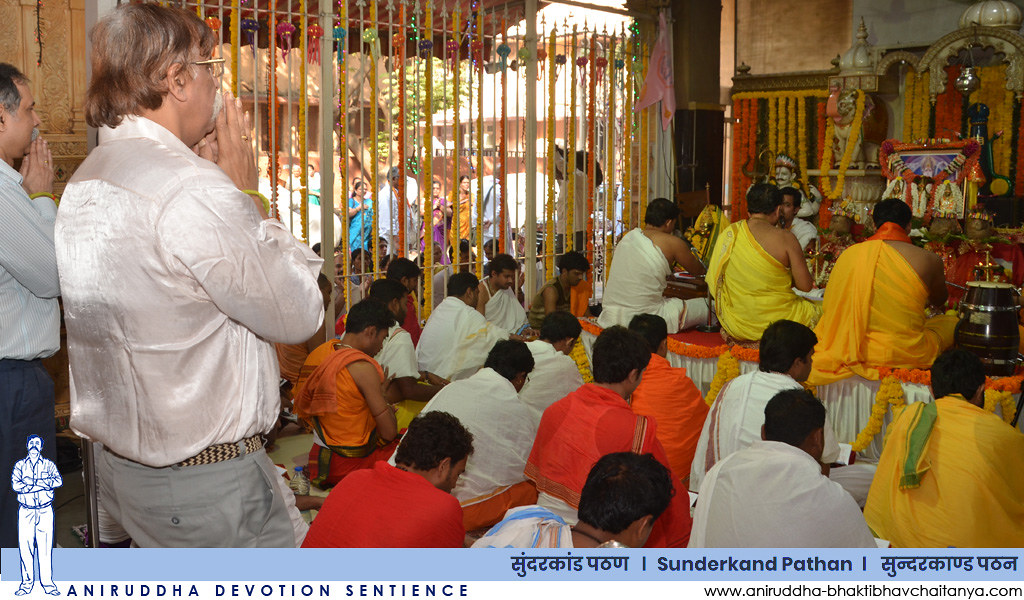Overview
Introduction to Sunderkand
Sunderkand is a significant chapter in the Indian epic, Ramayana, which tells the story of Lord Rama’s journey to rescue his wife, Sita, from the demon king, Ravana. It is widely revered and recited by Hindus, transcending linguistic boundaries. The word ‘Sunderkand’ translates to ‘beautiful chapter’, and it is indeed a beautiful composition that showcases the devotion, courage, and determination of Lord Rama. This chapter holds a special place in the hearts of devotees, as it highlights the power of faith and the triumph of good over evil. Sunderkand is not only popular in Hindi, but it is also widely recited in other languages like Odia, where it is known as ‘Sundara Kanda’. The inclusion of Odia language in the recitation of Sunderkand further emphasizes the universality of this sacred text, bridging linguistic boundaries and connecting people of different backgrounds and cultures.
Significance of Sunderkand
Sunderkand, a chapter from the Indian epic Ramayana, holds immense significance in Hindu mythology. It is believed to be a bridge that connects people across linguistic boundaries. The word ‘Sunderkand’ translates to ‘beautiful chapter’ in English, and it truly lives up to its name. This chapter narrates the journey of Lord Hanuman to find and rescue Lord Rama’s wife, Sita, who has been kidnapped by the demon king Ravana. Sunderkand is not only a tale of bravery and devotion but also serves as a symbol of unity and the power of good over evil. It showcases the unwavering faith and determination of Lord Hanuman, who overcomes various obstacles to accomplish his mission. This chapter is filled with powerful verses and teachings that inspire and guide devotees in their spiritual journey. The recitation of Sunderkand is believed to bring prosperity, peace, and protection to those who chant it with devotion.
Themes in Sunderkand
Sunderkand is a significant chapter in the Hindu epic Ramayana, known for its profound themes and timeless teachings. It serves as a bridge across linguistic boundaries, connecting people from various cultures and languages. The central theme of Sunderkand revolves around the journey of Lord Hanuman to Lanka in search of Goddess Sita, who has been abducted by the demon king Ravana. This chapter highlights the unwavering devotion, courage, and determination of Lord Hanuman, as he overcomes numerous obstacles and tests his limits to fulfill his duty. Sunderkand also emphasizes the power of faith, as Lord Hanuman’s unwavering belief in Lord Rama and his mission drives him to perform extraordinary feats. Through its captivating narrative and spiritual teachings, Sunderkand inspires individuals to overcome challenges, stay true to their beliefs, and find inner strength and courage.
Historical Background

Origin of Sunderkand
The origin of Sunderkand can be traced back to the ancient Hindu epic, Ramayana. Sunderkand is a chapter in the Ramayana that focuses on the journey of Hanuman to Lanka in search of Sita, the wife of Lord Rama. It is believed to have been composed by the sage Valmiki. The chapter gets its name from the word ‘Sundar’, which means beautiful, as it describes the beautiful exploits of Hanuman. Sunderkand has been widely revered and recited by devotees across different linguistic boundaries, transcending language barriers. It serves as a bridge that unites people from various backgrounds in their devotion to Lord Rama and Hanuman.
Influence of Ramayana
The Ramayana, an ancient Indian epic, has had a profound influence on various aspects of Indian culture and society. One of the most significant sections of the Ramayana is the Sunderkand, which focuses on the adventures of Hanuman, the monkey god. Hanuman’s devotion, courage, and loyalty showcased in the Sunderkand have made him a revered figure in Hindu mythology. The Sunderkand has not only played a pivotal role in shaping religious beliefs but has also served as a bridge across linguistic boundaries. It has been translated into various languages, allowing people from different regions to connect with the epic tale of Ramayana and Hanuman’s heroic deeds. The popularity and impact of the Sunderkand continue to resonate with millions of people, reinforcing its significance in Indian literature and spirituality.
Spread of Sunderkand
The spread of Sunderkand has transcended linguistic boundaries, reaching people of various cultures and languages. This ancient epic, originally written in Sanskrit, has been translated into numerous languages, including Hindi, Tamil, Telugu, Bengali, and Marathi, among others. Its universal themes of devotion, courage, and triumph over adversity resonate with people across different regions and backgrounds. Sunderkand has become a bridge that connects people from diverse linguistic backgrounds, fostering a sense of unity and shared spiritual experience.
Linguistic Diversity
Different Languages of Sunderkand
Sunderkand, an epic chapter from the Indian epic Ramayana, transcends linguistic boundaries and is revered in various languages. The beauty of Sunderkand lies in its ability to connect people from different cultures and regions through its universal message of devotion. Ambeybhakti, a prominent keyword in Sunderkand, represents the unwavering faith and devotion towards Lord Hanuman. This divine devotion is beautifully portrayed through the verses that highlight the strength, courage, and loyalty of Hanuman. The passages that mention Ambeybhakti can be considered as the essence of Sunderkand and are often recited with utmost reverence. These passages serve as a bridge, uniting people of different linguistic backgrounds in their shared love and devotion for Lord Hanuman.
Translations and Adaptations
Translations and Adaptations
Sunderkand, a chapter from the Hindu epic Ramayana, has transcended linguistic boundaries and has been translated and adapted into various languages. It has gained popularity not only in India but also among the Indian diaspora around the world. The story of Sunderkand revolves around the heroic journey of Lord Hanuman to find and rescue Lord Rama’s wife, Sita, who has been kidnapped by the demon king Ravana. The chapter is filled with important passages that highlight the devotion and bravery of Lord Hanuman. These passages, often referred to as the ‘Ka’ passages, have been widely recognized and appreciated for their profound impact. Many translations and adaptations of Sunderkand have focused on capturing the essence of these bold passages, providing readers with a deeper understanding of the story and its significance. Through these translations and adaptations, the message of love, devotion, and courage portrayed in Sunderkand continues to resonate with people of different cultures and languages.
Impact on Linguistic Boundaries
The epic of Valmiki Ramayana has had a profound impact on linguistic boundaries. It has served as a bridge connecting people from different regions and languages. The story of Lord Rama’s journey to rescue his wife Sita from the demon king Ravana has been passed down through generations, transcending linguistic barriers. The Valmiki Ramayana has been translated into various languages, allowing people from diverse linguistic backgrounds to access and appreciate this timeless tale. Through its universal themes of love, loyalty, and righteousness, the Valmiki Ramayana has fostered a sense of unity among people, regardless of their linguistic differences.
Cultural Impact

Religious Significance
Sunderkand holds immense religious significance in Hinduism. It is a chapter from the ancient Indian epic, Ramayana, which narrates the journey of Lord Hanuman to find and deliver a message to Lord Rama‘s wife, Sita, who has been kidnapped by the demon king, Ravana. The word ‘Sunderkand’ translates to ‘beautiful chapter’ and is considered one of the most important and revered chapters of the Ramayana. It is believed that reciting or listening to Sunderkand brings blessings, protection, and spiritual upliftment. The popularity of Sunderkand has transcended linguistic boundaries, with devotees seeking sunderkand lyrics in English to understand and connect with the divine story in their preferred language. By providing sunderkand lyrics in English, it allows people from diverse backgrounds to access and appreciate the religious teachings and moral values depicted in this sacred scripture.
Devotional Practices
Devotional practices play a crucial role in the spiritual journey of individuals. They provide a means to connect with the divine and deepen one’s faith. Sunderkand, a chapter from the Hindu epic Ramayana, is a significant devotional practice that transcends linguistic boundaries. It is recited and revered by millions of devotees worldwide. Sunderkand recounts the heroic journey of Lord Hanuman as he crosses the ocean to find and deliver a message to Lord Rama’s wife, Sita. The chapter is filled with powerful verses and profound teachings, making it a source of inspiration and solace for devotees. The recitation of Sunderkand is believed to bring blessings, protection, and spiritual upliftment to those who engage in this devotional practice.
Festivals and Celebrations
Sunderkand, a significant chapter of the Hindu epic Ramayana, holds immense sacredness and is celebrated with great enthusiasm across linguistic boundaries. The festival of Sunderkand is a time of devotion and spiritual connection, where devotees gather to recite the verses and seek blessings. The sacredness of Sunderkand lies in its profound teachings and the divine journey of Lord Hanuman. This festival serves as a bridge that unites people from different cultures and languages, reinforcing the message of unity and devotion. The celebrations include vibrant processions, melodious bhajans, and spiritual discourses, creating an atmosphere of joy and reverence. Sunderkand not only brings people together but also instills a sense of faith and devotion, reminding us of the eternal power of Lord Hanuman and the importance of spirituality in our lives.
Literary Analysis

Poetic Structure
The poetic structure of Sunderkand is a remarkable aspect of this epic. It is composed in the form of a ‘Kand’ or a chapter, which is further divided into several ‘Dohas’ or couplets. Each doha consists of two lines with a specific rhyme scheme. The use of poetic devices such as alliteration, metaphor, and simile adds depth and beauty to the verses. The language used in Sunderkand is simple yet profound, making it accessible to people from various linguistic backgrounds. The rhythmic flow of the verses creates a mesmerizing effect, captivating the readers and keeping them engrossed in the narrative. The most important passages in Sunderkand, which convey significant messages and emotions, can be formatted in bold to emphasize their impact.
Symbolism and Imagery
The symbolism and imagery used in Sunderkand are rich and profound. The text is filled with metaphors and allegories that convey deeper meanings and insights. One of the key symbols in Sunderkand is the bridge, which represents the connection between different linguistic boundaries. It symbolizes the power of language to unite people and bridge gaps. Another important symbol is the ocean, which represents the vastness of knowledge and wisdom. The ocean is described as an endless expanse of wisdom, and crossing it requires courage and determination. The use of these symbols adds depth and complexity to the narrative, making Sunderkand a powerful and thought-provoking piece of literature.
Narrative Techniques
The narrative techniques used in the Sunderkand chapter of Ramayan are highly effective in bridging linguistic boundaries. Through its vivid descriptions and engaging storytelling, the chapter captivates readers of all languages, allowing them to connect with the story on a deeper level. One of the key narrative techniques employed is the use of symbolism, which adds depth and meaning to the events and characters. Another technique is the skillful use of dialogue, which brings the characters to life and enhances the emotional impact of the story. Overall, the narrative techniques used in Sunderkand make it a powerful and compelling chapter that transcends language barriers.
Contemporary Relevance

Sunderkand in Modern Times
Sunderkand in Modern Times
Sunderkand, a chapter from the epic Ramayana, continues to hold great significance in modern times. People from different linguistic backgrounds have discovered the miracles of Sunderkand and the grace of Lord Hanuman. It has become a bridge across linguistic boundaries, bringing people together in their devotion and admiration for Lord Hanuman. The power and relevance of Sunderkand in today’s world cannot be understated. Through the recitation of Sunderkand, individuals find solace, strength, and inspiration to overcome challenges in their lives. The stories and teachings within Sunderkand continue to resonate with people of all ages and backgrounds, instilling faith and instigating spiritual growth. In a world that is often divided by language and culture, Sunderkand serves as a unifying force, reminding us of the universal values of love, devotion, and perseverance.
Reinterpretations and Adaptations
The story of Sunderkand, a chapter from the Indian epic Ramayana, has transcended linguistic boundaries and has been reinterpreted and adapted in various forms. This ancient tale of devotion and courage has captured the hearts of people across different cultures and languages. From poetry to plays, from movies to music, Sunderkand has been celebrated and retold in numerous ways. One of the key reasons for its enduring popularity is the universal themes it explores, such as the triumph of good over evil and the power of unwavering faith. These themes resonate with people from all walks of life, making Sunderkand a timeless and beloved story.
Author Profile

Latest entries
- 28 June 2025BlogHow to Choose the Best High-Yield Savings Account with 5%+ Interest in India (2025 Guide)
- 28 December 2024BlogTop 6 Employee Management Software for Small Businesses
- 19 December 2024BlogShri Hanuman Chalisa in Hindi Text with English Translation
- 7 August 2024BlogTop 13 Online Master of Social Work Programs

